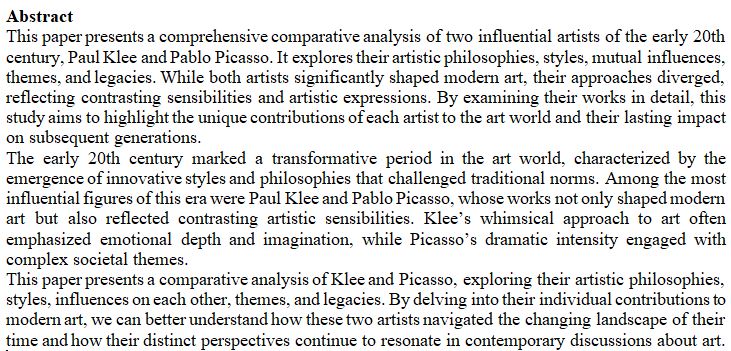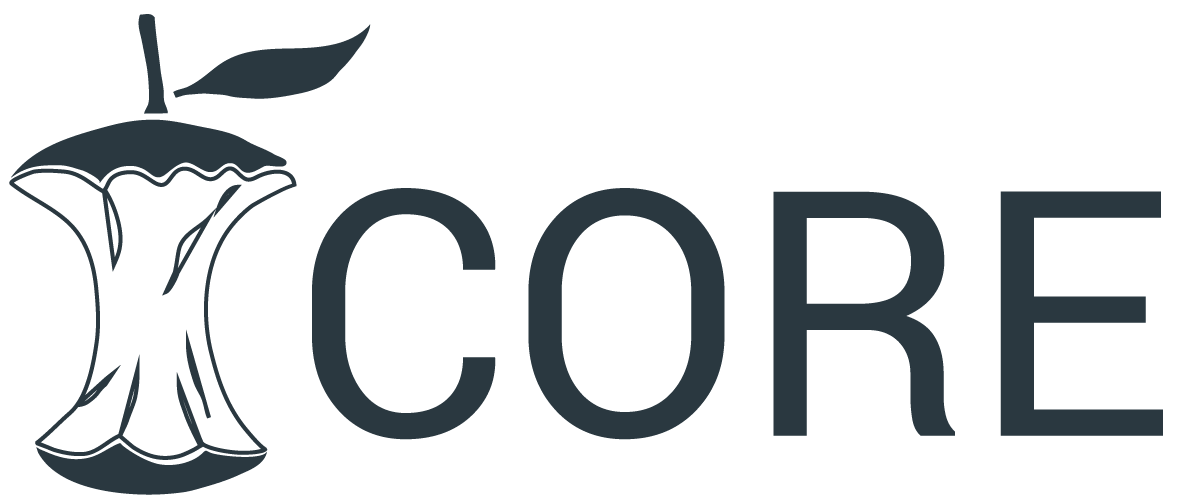Comparative Analysis of Two Influential Artists Paul Klee and Pablo Picasso: Contrasting Artistic Philosophies and Legacies
DOI:
https://doi.org/10.5281/zenodo.14904385Keywords:
comparative, modernist, artistic-philosophies, influences, 20th- century, art-movementsAbstract
This paper presents a comprehensive comparative analysis of two influential artists of the early 20th century, Paul Klee and Pablo Picasso. It explores their artistic philosophies, styles, mutual influences, themes, and legacies. While both artists significantly shaped modern art, their approaches diverged, reflecting contrasting sensibilities and artistic expressions. By examining their works in detail, this study aims to highlight the unique contributions of each artist to the art world and their lasting impact on subsequent generations.
The early 20th century marked a transformative period in the art world, characterized by the emergence of innovative styles and philosophies that challenged traditional norms. Among the most influential figures of this era were Paul Klee and Pablo Picasso, whose works not only shaped modern art but also reflected contrasting artistic sensibilities. Klee’s whimsical approach to art often emphasized emotional depth and imagination, while Picasso’s dramatic intensity engaged with complex societal themes.
This paper presents a comparative analysis of Klee and Picasso, exploring their artistic philosophies, styles, influences on each other, themes, and legacies. By delving into their individual contributions to modern art, we can better understand how these two artists navigated the changing landscape of their time and how their distinct perspectives continue to resonate in contemporary discussions about art.
Downloads
References
Barron, A. (2010). Paul Klee: The nature of creativity. New York: Art Publishers.
Gale. (2010). The artistic relationship between Klee and Picasso. Available at: https://www.tretyakovgallerymagazine.com/articles/2-2010-27/zentrum-paul-klee-meeting-place-klee-and-picasso.
Johnson, M. (2018). Irony in modern art: The case of Paul Klee. Journal of Art History.
Smith, R. (2019). Cubism: The influence on Paul Klee. Art Review Quarterly.
Steinberg, L. (2005). Pablo Picasso: The artist as social commentator. Modern Art Perspectives.
Tretyakov Gallery Magazine. (2010). The zentrum Paul Klee: Meeting place of Klee and Picasso. Available at: https://www.tretyakovgallerymagazine.com/articles/2-2010-27/zentrum-paul-klee-meeting-place-klee-and-picasso.

Published
How to Cite
Issue
Section
ARK
License
Copyright (c) 2025 Prof. Shirishkumar Prabhudas Patel

This work is licensed under a Creative Commons Attribution 4.0 International License.
Research Articles in 'Social Science Journal for Advanced Research' are Open Access articles published under the Creative Commons CC BY License Creative Commons Attribution 4.0 International License http://creativecommons.org/licenses/by/4.0/. This license allows you to share – copy and redistribute the material in any medium or format. Adapt – remix, transform, and build upon the material for any purpose, even commercially.










